Blog, Travel
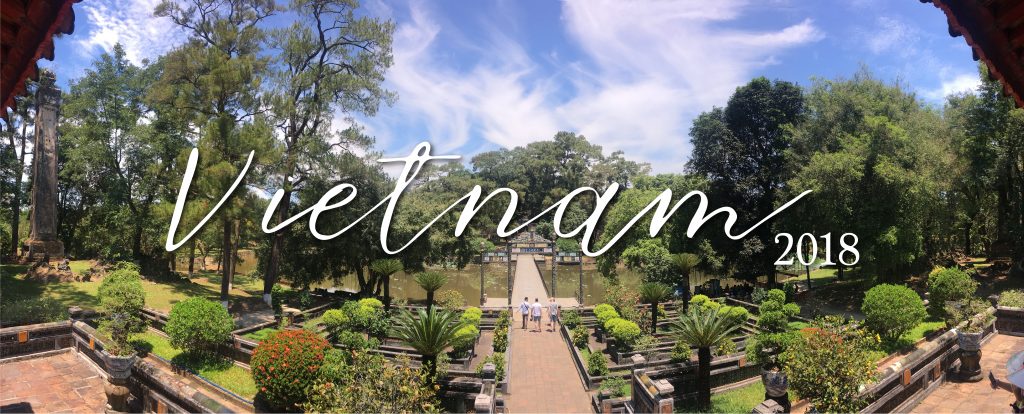
Our trip to Hanoi and Hue in Vietnam was really an eye-opening (or mouth-opening) experience for our taste buds and the first must-try item in Vietnam on our list is… a sandwich.
Hear us out and make no mistake, this is one of the most unique Vietnamese street food you can ever savour.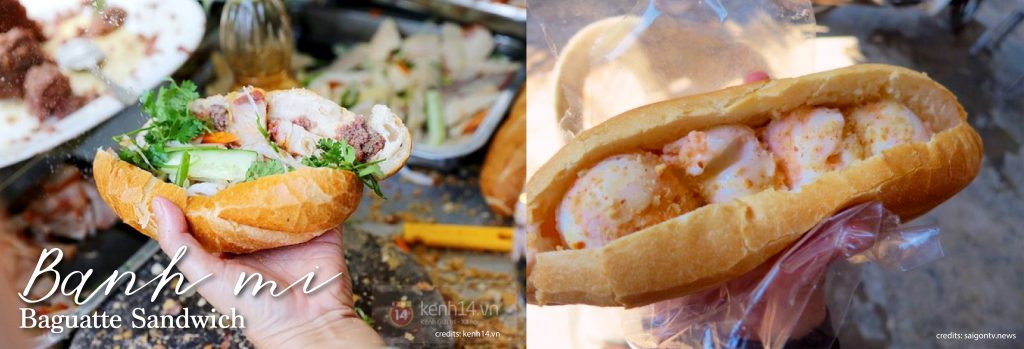
Walk along streets or take a stroll at any night market in Hanoi and you will find at least one cart selling the iconic Vietnamese baguette, or Bánh mì as they call it.
The baguette is about the size of a 6-inch Subway sandwich, but is crusty as its name suggests and sliced in the middle to be stuffed with all sorts of fillings.
Originally a remnant of French colonialism, the baguette has adopted a much more colourful identity over the years to include glorious fillings such as luncheon meat, mayonnaise, pickled carrots, pork sausage and many more exciting options.
Next up is my personal favourite, the Bánh bèo.
It is a bite-sized dish (though a dozen or more could be served at once) made mainly from rice flour and tapioca flour and is enjoyed on the streets as well as in restaurants as a savoury dish. Perhaps in the simplest terms, this is the steamed rice cake of Vietnam, just like a mini version of our Chwee Kueh (水粿).
What makes it so special is that it is topped with dried shrimps and crispy pork skin among other ingredients. What makes it addictive, however, is the fish sauce that goes with it. Scoop up some fish sauce with your spoon before dipping it into the little serving plate containing the dish.
If you’re skillful, you can lift the entire piece off and enjoy a mouthful of delectable rice cake!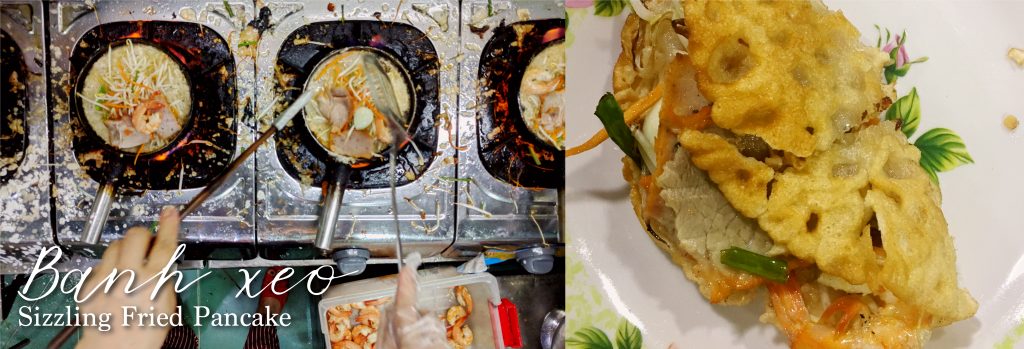
We have yet another ‘Bánh’ on the list: the Bánh xeo.
In case you haven’t caught up, Bánh roughly translates to cake or pastry. This time, we are looking at the Vietnamese crepe that is also sometimes referred to as Vietnamese pancake.
Bánh xeo is made with thin rice batter (no eggs) poured into a sizzling hot pan before fillings such as pork, fresh shrimps, onions and bean sprouts are added and folded into the crepe.
The dipping sauce this time is actually similar to what we eat with Satay, just a little spicier and nuttier, which brings out the flavours of the ample fillings and complements the crisp texture of the crepe. I highly recommend ordering some for sharing if you are also trying out different items at the restaurant—these unassuming crepes are filling; in fact, one serving is considered a light lunch by locals.
In comparison, they are like the Prawn Crackers we have selling at roadside or night markets, so it’s definitely a must try if you’re really into fried food.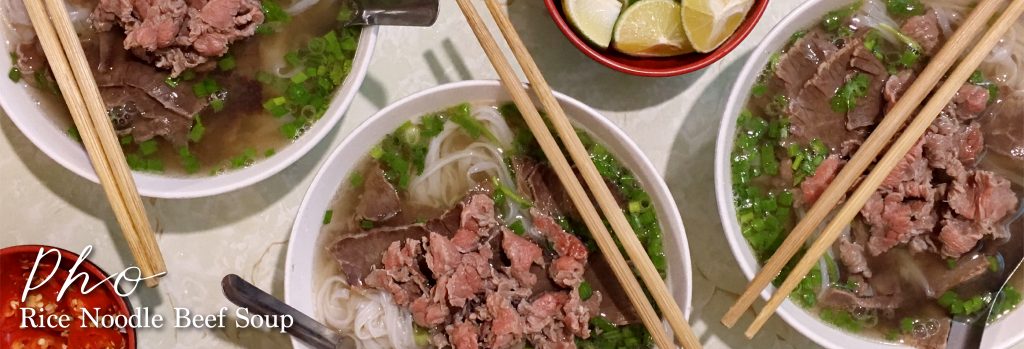
Moving on to heartier main courses, I would think that Phở doesn’t need a lengthy introduction.
Still the king of Vietnamese cuisine, these popular noodles are the safe bet for anyone who isn’t feeling too adventurous. Beef slices are typically served with silky-smooth flat rice noodles, though some restaurants do serve it with the alternative chicken. Patrons are welcome to add coriander, mint leaves or squeeze some lime into the mix.
If you are travelling across several locations in the country, you could compare the Pho served in Northern and Southern Vietnam: Northern ‘Hanoi style’ pho has a clearer soup and is made more salty than sweet, while its Southern counter part hailing from Saigon is brothy with a hint of sweetness and usually served with bean sprouts.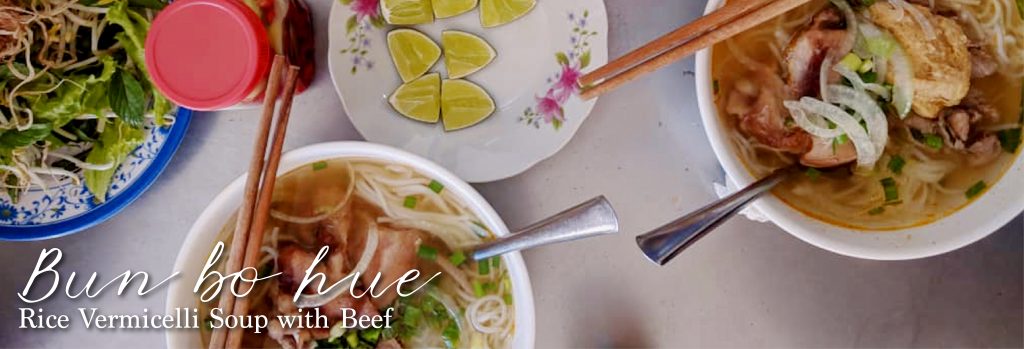
Another noodle entrée that made the list is Bún bò huế (rice vermicelli soup with beef).
Other than the choice of noodles being vermicelli, what marks this dish as vastly different from pho is its soup—red with chilli oil, fragrant with lemongrass and dark in colour. The soup is in fact famous for balancing sweetness, saltiness, sourness and spiciness all at once.Along with a myriad of herbs, you may also find pork knuckles in the mix.
I had the chance to savour a bowl while in Hue, where it originated.
As told by the locals, this is the signature dish of Hue, so don’t miss out when you’re there!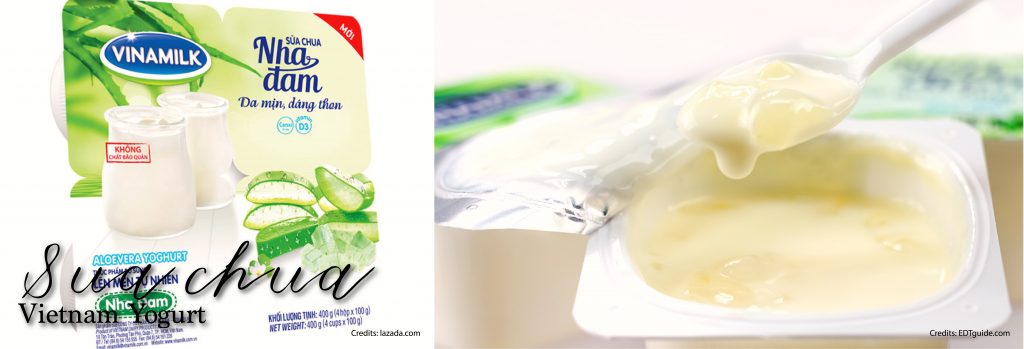
Bonus treat: Last but not least, yogurt is always served at buffets during my stay and to my surprise, the taste is nothing like the yogurt we are familiar with.
Definitely sweeter, but not unpleasantly so, I was told that Vietnamese yogurt is made using condensed milk instead of fresh milk because the country does not produce much dairy.
So if you come across these little treasures, do give it a go.
The original and Aloe Vera flavours are our top picks. You can find these goodies at convenience stores and mini marts as well.
–
That’s it from us now! I hope you liked our little break down of these local delicacies of Vietnam.
We couldn’t cover all so we only included our favourite few dishes.
Leave a comment if you have anything you’d like us to try or you’ve tried before in case we have a chance to visit Vietnam again!
